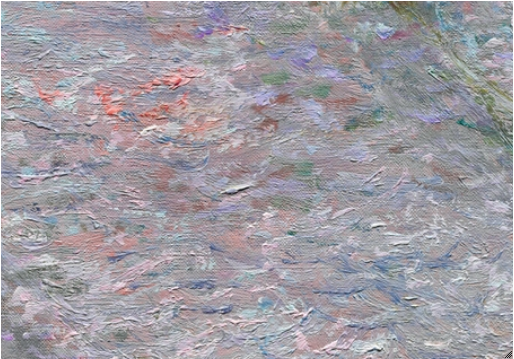I bought cotton twill, calico, fine cotton and wool delaine from Whaley's via the university. I have tried to find other direct sources and would really like to keep to organic cotton but am still thinking about the different properties of the fabrics and the fine cotton is much lighter than the twill but both have attributed when it comes to resist.
So the week started with the cottons which need to be scoured before dyeing.
Cotton and Linen dyeing requires a different approach to wool and silk. The metallic part of the mordant does not attach readily to cellulose until it has reacted with Tannic Acid (tannin). This means dissolving the Tannin, filling the bath!! adding the dissolved Tannin then immersing the 550gms of fabric and soaking for 24 hours!
I want to try some of my design ideas -
creating a sea of colours after seeing Monet's Bathers
 using the indigo dye at different immersion timing to create waves of colour after Maggie Hambling's work
using the indigo dye at different immersion timing to create waves of colour after Maggie Hambling's workSo after the Tannin I looked through my dye samples and chose to use Alum and Copper mordants to achieve the colours I need.
The Alum is dissolved and added to a stainless steel pot then Soda added - the water is heated to simmering with the fabric immersed and about 5 litres of water was needed to keep the fabric under the water. I stirred occasionally to keep the fabric fully soaked and simmered for an hour then left to cool for 24 hours. All cotton fabrics and the wool delaine were mordanted which came to 500 gms.
I also mordanted 500gms of fabric with Copper but this was done the next day as I only have one container that holds 5 litres of water plus fabrics.
All the fabrics were rinsed in the washing machine then LABELLED!!
So 5 days later I need to get the paste made and buy a deep fat fryer to melt wax. The deep fat fryer idea is from my visit to Helen Dougall's studio!
No comments:
Post a Comment